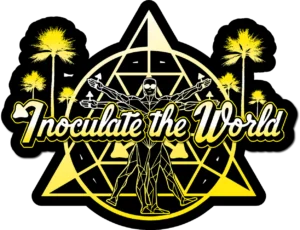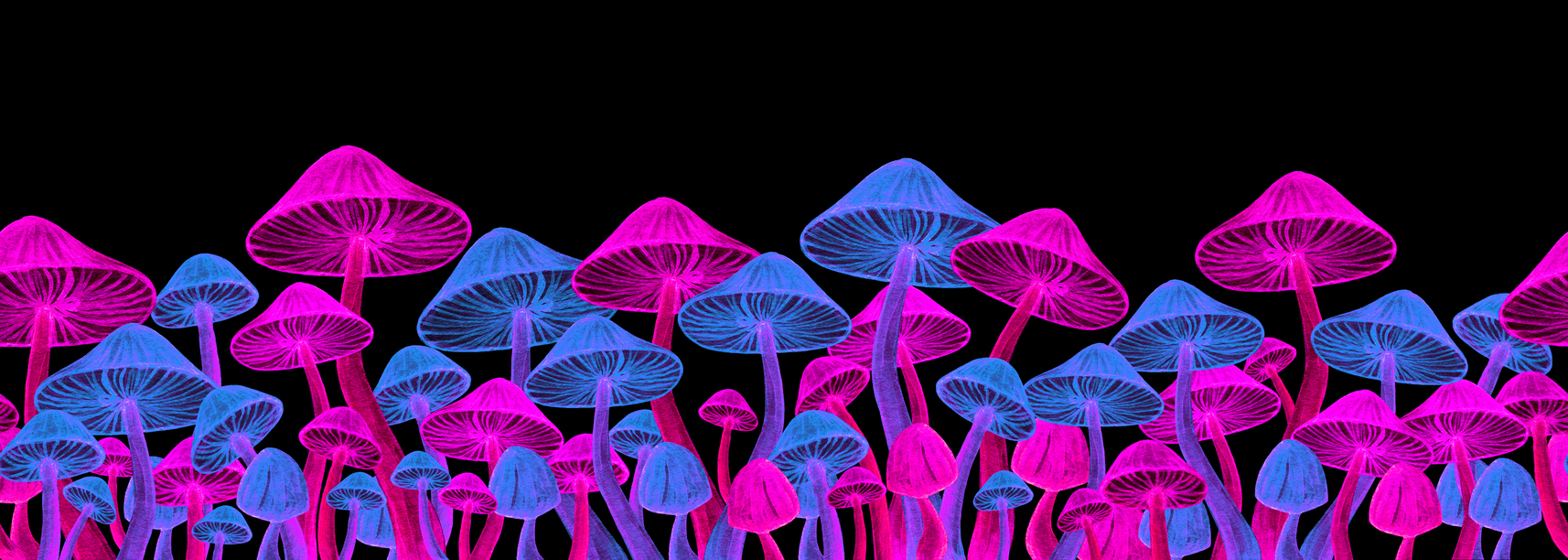Rust spores are cubensis mushroom spores which have turned red, orange, or reddish-brown due to a genetic mutation. When you think of Psilocybe cubensis, you’d typically expect a dark brown or purple spore print, but this is not always the case. Rust mushroom strains are named for their rusty red hue, compared to the typical dark purple or brown spore color you typically see with cubensis spores. In this article, we’ll dive deeper into what makes these spores interesting, how to spot them, and which of our strains have this unique trait.
What Are Rust Spores?
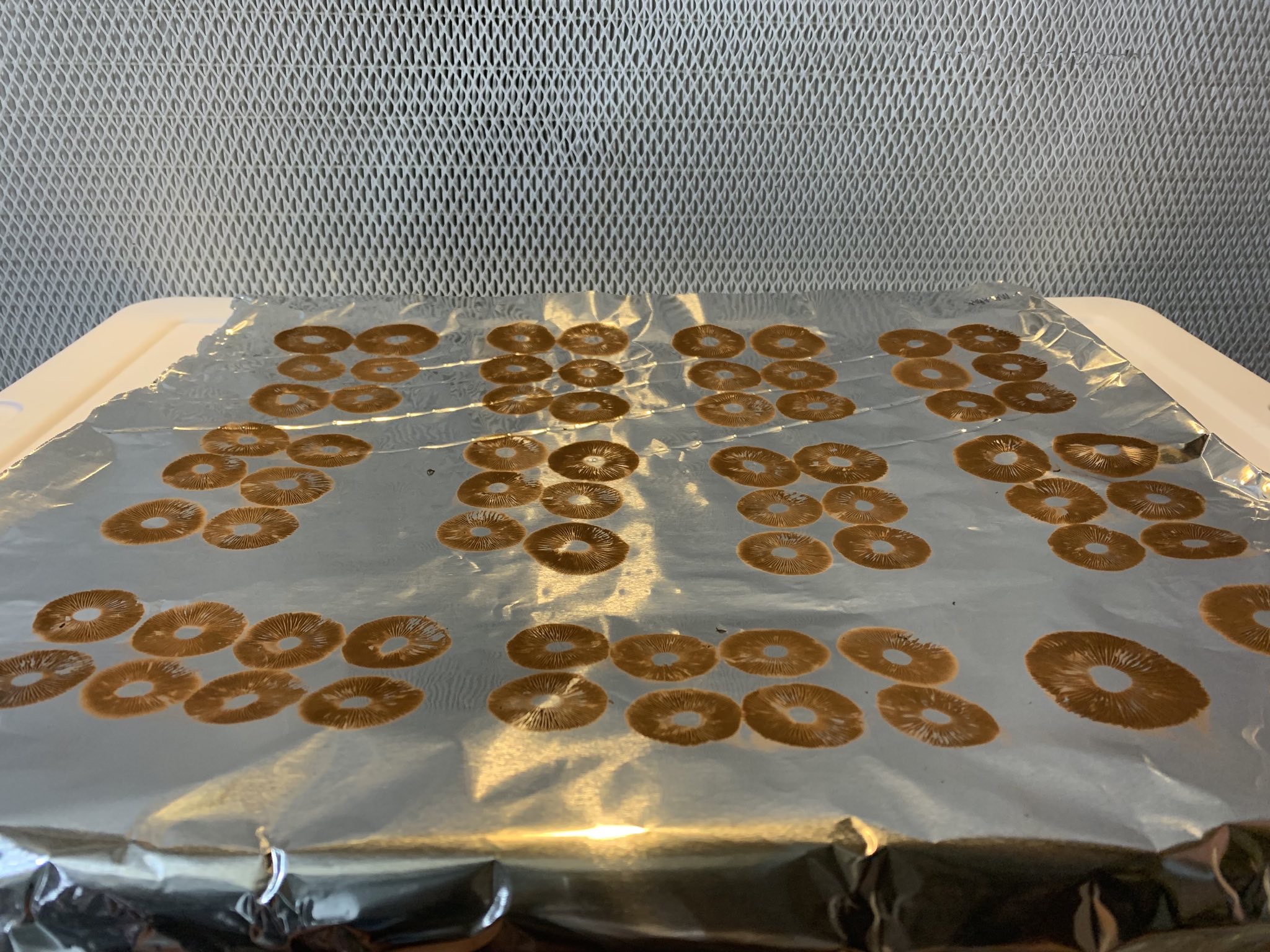 Just like albino spores have a mutation that makes them deviate from their original color, red or rusty spores also show that a genetic mutation has taken place. A mutation of a specific trait, such as the color of the spores, is kind of like how you’d think of hair or eye color for people– these features don’t change anything about how our bodies work, but they do change our appearance. Their unique visual trait makes rusty spores particularly interesting and rare.
Just like albino spores have a mutation that makes them deviate from their original color, red or rusty spores also show that a genetic mutation has taken place. A mutation of a specific trait, such as the color of the spores, is kind of like how you’d think of hair or eye color for people– these features don’t change anything about how our bodies work, but they do change our appearance. Their unique visual trait makes rusty spores particularly interesting and rare.
Why Are Rust Strains of Cubensis Interesting?
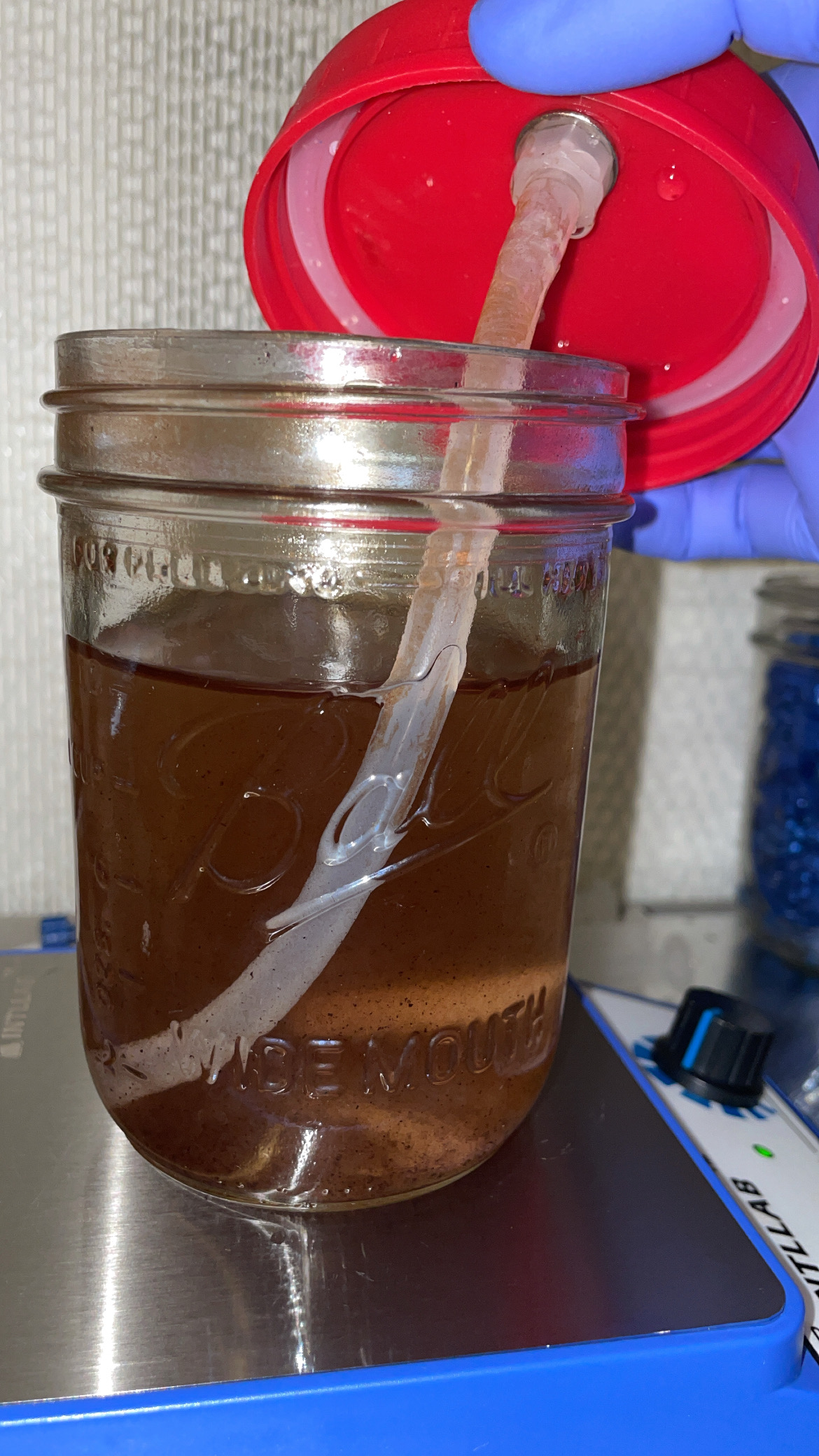 While the color of the rust strains’ spores is quite unusual, it doesn’t necessarily alter anything else about the genetics. These types of mutations, isolated to specific visual traits, make rusty spores quite interesting for genetic research. In addition to adding diversity to your microscopic research, this type of mutation is a fascinating aspect of genetics for you to study. You can see this difference right away in a syringe, print, or jar. Here’s you can see a jar of rusty spores before the liquid is transferred to spore syringes:
While the color of the rust strains’ spores is quite unusual, it doesn’t necessarily alter anything else about the genetics. These types of mutations, isolated to specific visual traits, make rusty spores quite interesting for genetic research. In addition to adding diversity to your microscopic research, this type of mutation is a fascinating aspect of genetics for you to study. You can see this difference right away in a syringe, print, or jar. Here’s you can see a jar of rusty spores before the liquid is transferred to spore syringes:
The Difference Between Rust Mushroom Spores, Red Spores and Typical Cubensis Spores
The best way to understand what makes rusty and red spores unique is by comparing them to more common-looking cubensis spores. Your typical cubensis will look dark brown to the naked eye, which you will also see under the microscope. Rusty and red spores will look different from typical cubensis spores, both under the microscope and to the naked eye. Rusty spores will look lighter, almost an amber, orangish gold.
Rust Strains of Psilocybe Cubensis
Several cubensis strains have a ‘rust’ mutation, but they can be hard to find. Here at Inoculate The World, we’ve spent the better part of a decade seeking these genetics out as part of our library, which makes us one of the only places with an extensive selection of these rare rust spores. Below is a list of our favorite rust spores and what makes them unique.
Colombian Rust Spores
With their light red-gold color, Columbian Rust cubensis spores are easily recognizable as rusty for beginner researchers. Originating from Columbia, this strain is one of the more well-known strains of rusty spores. Our recently released Columbian Rust Isolated spore syringe offers these genetics in a consistent and predictable format for your research. 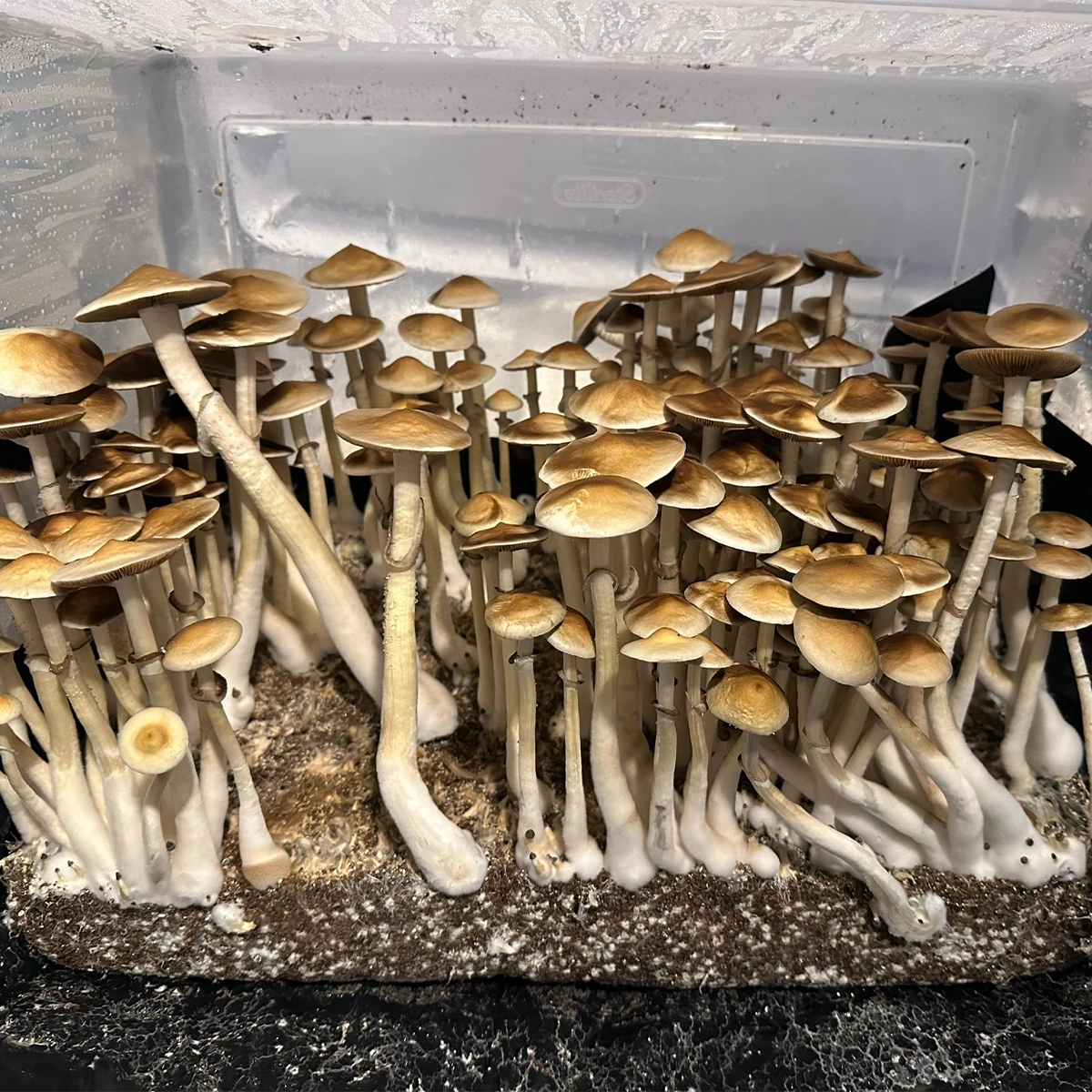
Blue Magnolia Rust
Blue Magnolia Rust was isolated from the classic Blue Magnolia. After a years-long process of genetic isolation, Blue Magnolia Rust offers the same features and consistency as the original Blue Magnolia, but with beautiful red-brown spores. The spores from our Blue Magnolia Rust spore prints will show up as a subtle rusty gold to the naked eye.
Rusty White Cubensis
Rusty White Cubensis, commonly called Rusty Whyte, are some of the most popular rusty spores. You can also study these genetics with our Rusty White Spore Print. While the mushroom itself phenotypically presents as white, its rusty spores set it apart from your typical cubensis.
Golden Halo Cubensis
Golden Halo, originally discovered growing in a Jamaican horse pasture, is one of the few strains out there with such unique pale yet warm-hued spores. Although this strain’s status as rusty, and where its ‘rustiness’ actually came from are up for debate, it definitely belongs on this list as such a big part of the conversation, and as a striking specimen. Looking at its beautiful rusty gold spore prints, it’s easy to see how Golden Halo got its name. This strain is also available as an isolated spore syringe. 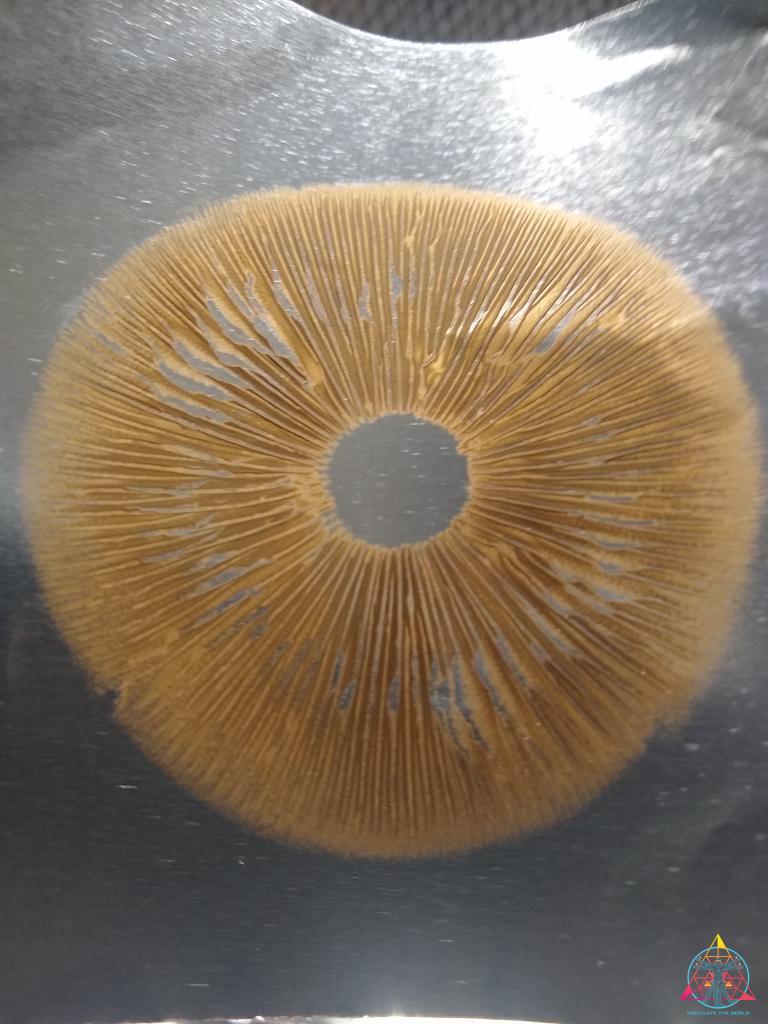
Rusty Melmac Revert
Rusty Melmac Revert has a slightly more complicated lineage. Melmac originates from early Penis Envy genetics, which were further isolated by the Homestead Book Company. It’s a leucistic mushroom, meaning it has pigmented spores but fruit that lacks pigment. In this case, it was found to have rusty golden spores, which are visible in our Rusty Melmac Revert Spore Print. We also offer this as an isolated syringe.
Psilocybe Ovoideocystidiata
Another rusty spore falls outside of the Psilocybe Cubensis species entirely. Ps Ovoideocystidiata, often shortened to Ovoids, falls under the same genus as cubensis (psilocybe) but has distinctive differences in color and shape to cubensis. Ps Ovoideocystidiata, also available with our Psilocybe Ovoideocystidiata Ohio River Valley Print can be found in springtime, growing plentifully on wood chips in the Pacific Northwest. Its spores are “rhomboid” meaning they are more diamond-shaped than the “elipsoid” or oval spores of cubensis. 
Red Spore Strains of Psilocybe Cubensis
While rusty spores are quite unique, it’s even more rare for spores to appear bright red. Not many strains on the market are capable of producing red spores, but we carry several strains with this distinctive trait.
Redboy Cubensis
Redboy Cubensis is known for the variation in spores it can produce. It’s possible for Redboy Cubensis to drop distinctive deep red spores along with several other colors. On a Redboy Cubensis spore print, these subtleties may not be visible to the naked eye, but you’ll likely see a variety of spore colors under the microscope, from red, purple and gold to black! It’s also available as an isolated spore syringe.
Mexican Red Spore
Not to be confused with Ps. Mexicana, Mexican Red spore is another cubensis with unique bright red spores.These spores will look almost ginger colored when clumped together, while the individual spores are bright orange-ish red. Rusty spores could be the perfect new mutation to add novelty to your research. If you’d like to start researching red or rusty spores, you can’t go wrong with any of the strains outlined in this guide. We’d love to hear your favorite rusty strain in the comments below!

